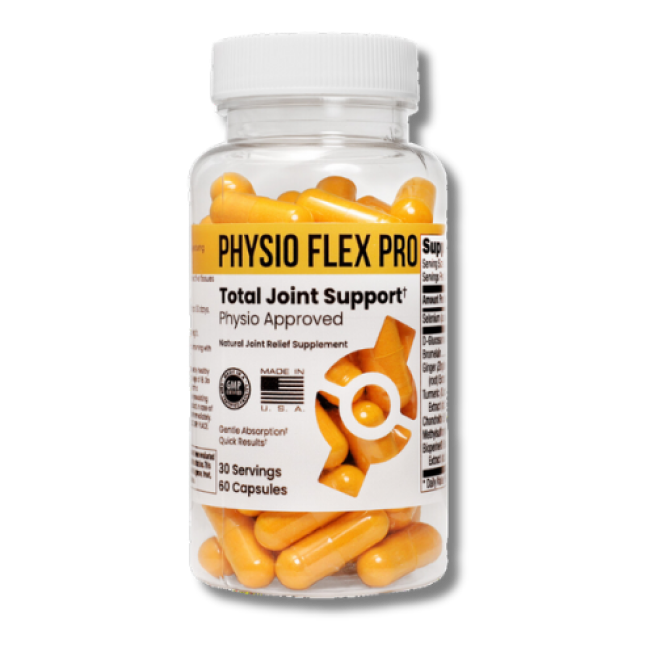You're doing everything right. Daily workouts, perfect posture, healthy diet, staying hydrated. You're the poster child for wellness culture.
So why do your joints feel like they belong to someone twice your age?
Here's the uncomfortable truth: Some of your "healthiest" habits are secretly destroying your joints. The very routines you're proud of, the disciplines you've worked hard to build, the advice you've followed religiously - they might be the reason you're in pain.
This isn't about obvious joint destroyers like being sedentary or eating junk food. This is about the sneaky saboteurs hiding behind health halos, the well-intentioned habits that sound perfect but are slowly wreaking havoc on your joints.
Today, we're exposing the 7 "healthy" habits that are actually joint health disasters in disguise.
Saboteur #1: Your "Perfect" Posture
The "Healthy" Habit:
Sitting up straight, shoulders back, chin tucked. Maintaining perfect spinal alignment at all times because "good posture prevents pain."
Why It Sounds Right:
We've been told since childhood that good posture is essential for spinal health. Slouching is bad, straight is good.
The Joint-Destroying Reality:
Static "perfect" posture is just as damaging as slouching - sometimes worse.
Here's what happens when you force rigid posture:
-
Muscle fatigue and tension from holding unnatural positions
-
Reduced blood flow to postural muscles
-
Joint compression from constant muscle contraction
-
Movement restriction that prevents natural spinal curves
-
Compensatory patterns that create problems elsewhere
The Science:
A 2021 study in Applied Ergonomics found that people who maintained rigid "perfect" posture had higher rates of neck and back pain than those who changed positions frequently, even if their positions weren't "textbook perfect."
What Your Joints Actually Need:
Dynamic posture - frequent position changes with good awareness. Your spine has natural curves for a reason. Honor them, don't fight them.
The Fix:
- Change positions every 20-30 minutes
- Use the 90% rule: Good posture 90% of the time, movement breaks 10%
- Focus on spinal mobility, not rigidity
- Strengthen your core to support natural posture, don't force it
Saboteur #2: The "No Days Off" Exercise Mentality
The "Healthy" Habit:
Daily intense workouts because consistency is key. Rest days are for the weak. More is always better.
Why It Sounds Right:
Exercise is good for you, so more exercise must be better. Champions train every day.
The Joint-Destroying Reality:
Your joints need recovery time more than your ego needs daily workouts.
What daily intense exercise does to your joints:
-
Prevents tissue repair (healing happens during rest, not during exercise)
-
Accumulates micro-damage faster than your body can fix it
-
Increases systemic inflammation (chronic rather than beneficial acute inflammation)
-
Depletes recovery resources (nutrients, hormones, energy)
-
Creates overuse injury patterns that compound over time
The Science:
Research shows that people who take 1-2 complete rest days per week have 40% fewer overuse injuries and better long-term joint health than daily exercisers.
What Your Joints Actually Need:
Strategic recovery that's as planned as your workouts.
The Fix:
- Schedule 1-2 complete rest days per week
- Alternate high and low intensity days
- Listen to your body's fatigue signals
- Consider active recovery (gentle walking, stretching) instead of complete inactivity
- Remember: Adaptation happens during recovery, not during exercise
Saboteur #3: The "Stretch Everything, All the Time" Approach
The "Healthy" Habit:
Daily aggressive stretching sessions. If tight, stretch it. Deeper stretches are better stretches. Flexibility equals health.
Why It Sounds Right:
Flexibility is good, tight muscles are bad. Stretching prevents injury and improves performance.
The Joint-Destroying Reality:
Overstretching creates joint instability and can actually increase injury risk.
What excessive stretching does:
-
Stretches ligaments (which don't bounce back like muscles)
-
Creates joint hypermobility (too much range of motion)
-
Reduces proprioception (your body's position awareness)
-
Weakens the muscle-joint connection (stability suffers)
-
Can cause micro-tears in connective tissue
The Science:
A 2020 study found that people with hypermobile joints (often from overstretching) had 60% higher rates of joint pain and injury than those with normal flexibility.
What Your Joints Actually Need:
Mobility with stability - flexible muscles supporting stable joints.
The Fix:
- Stretch tight areas, strengthen weak areas
- Hold stretches for 30-60 seconds, not minutes
- Focus on muscle stretching, not joint stretching
- Add stability exercises after stretching sessions
- If you're already flexible, prioritize strength over more flexibility
Saboteur #4: The "Hydration Obsession" Water Overload
The "Healthy" Habit:
Drinking massive amounts of water because "hydration is everything." Clear urine is the goal. More water equals better health.
Why It Sounds Right:
Dehydration is bad, so maximum hydration must be good. Your joints need water to function.
The Joint-Destroying Reality:
Overhydration can dilute essential electrolytes needed for proper joint function.
What water overload does:
-
Dilutes sodium, potassium, and magnesium (crucial for muscle and joint function)
-
Disrupts cellular fluid balance (cells need the right concentration, not just volume)
-
Can cause muscle cramps and weakness (affecting joint support)
-
Interferes with nutrient absorption (diluted digestive juices)
-
Stresses kidneys (which affects overall inflammation levels)
The Science:
Research shows that optimal hydration includes electrolyte balance, not just water volume. Athletes who focus only on water intake have higher injury rates than those who balance water with electrolytes.
What Your Joints Actually Need:
Balanced hydration with adequate electrolytes.
The Fix:
- Aim for pale yellow urine, not completely clear
- Include natural electrolytes (sea salt, potassium-rich foods)
- Drink to thirst, don't force excessive water
- Consider electrolyte supplementation if you sweat heavily
- Quality of hydration matters more than quantity
Saboteur #5: The "Anti-Inflammatory Diet" Extremism
The "Healthy" Habit:
Eliminating all potentially inflammatory foods. No nightshades, no grains, no dairy, no sugar, no fun. If it might cause inflammation, it's banned.
Why It Sounds Right:
Inflammation is bad for joints, so eliminating all inflammatory foods must be good.
The Joint-Destroying Reality:
Extreme elimination diets can create nutrient deficiencies that actually harm joint health.
What overly restrictive diets do:
-
Eliminate beneficial compounds found in "inflammatory" foods
-
Create nutrient gaps (calcium from dairy, antioxidants from nightshades)
-
Increase stress (which is actually inflammatory)
-
Reduce dietary variety (limiting beneficial compounds)
-
Can trigger disordered eating patterns (psychological stress affects inflammation)
The Science:
Studies show that moderate anti-inflammatory diets are more sustainable and effective long-term than extreme elimination approaches. The Mediterranean diet, which includes many "inflammatory" foods in moderation, consistently shows joint health benefits.
What Your Joints Actually Need:
A balanced, sustainable anti-inflammatory approach with variety.
The Fix:
- Focus on adding anti-inflammatory foods rather than eliminating everything
- Include a variety of colorful fruits and vegetables
- Don't fear entire food groups without medical necessity
- Consider food quality over food restriction
- Stress about food can be more inflammatory than the food itself
Saboteur #6: The "Supplement Everything" Mentality
The "Healthy" Habit:
Taking dozens of supplements because "natural is always better" and "more nutrients equal better health."
Why It Sounds Right:
If some vitamins are good, more must be better. You can't overdose on natural supplements.
The Joint-Destroying Reality:
Supplement interactions and imbalances can actually increase inflammation and interfere with joint health.
What supplement overload does:
-
Creates nutrient imbalances (too much of one thing blocks absorption of another)
-
Overloads detoxification systems (liver and kidneys work overtime)
-
Can increase oxidative stress (some antioxidants become pro-oxidants in high doses)
-
Interferes with medication absorption (if you take any)
-
Wastes money on redundant or unnecessary compounds
The Science:
Research consistently shows that targeted, evidence-based supplementation is more effective than shotgun approaches. Quality and synergy matter more than quantity.
What Your Joints Actually Need:
Strategic, comprehensive supplementation based on evidence and individual needs.
The Fix:
- Choose comprehensive formulations over individual supplements
- Look for clinically researched dosages and combinations
- Consider your diet before supplementing everything
- Quality matters more than quantity
- Work with professionals for personalized approaches
Saboteur #7: The "Mind Over Matter" Pain Denial
The "Healthy" Habit:
Pushing through pain because "pain is just weakness leaving the body" and "mental toughness conquers all."
Why It Sounds Right:
Mental resilience is important. Champions play through pain. Tough people don't complain.
The Joint-Destroying Reality:
Ignoring pain signals leads to serious joint damage and chronic problems.
What pain denial does:
-
Ignores your body's warning system (pain exists for a reason)
-
Allows minor problems to become major ones (small issues compound)
-
Creates compensatory movement patterns (leading to new injuries)
-
Increases systemic inflammation (chronic pain is inflammatory)
-
Delays necessary treatment (early intervention is most effective)
The Science:
Studies show that people who address pain early have dramatically better outcomes than those who "tough it out." Early intervention prevents 80% of chronic joint problems.
What Your Joints Actually Need:
Respect for pain signals combined with appropriate action.
The Fix:
- Distinguish between discomfort and pain
- Address persistent pain within 2 weeks
- Modify activities based on feedback
- Seek professional help for recurring issues
- Mental toughness includes making smart decisions about your body
The Real "Healthy" Approach to Joint Health
Why These Habits Become Saboteurs:
-
They take good ideas to extremes (more isn't always better)
-
They ignore individual variation (one size doesn't fit all)
-
They focus on single factors (joint health is multifactorial)
-
They ignore feedback signals (your body knows what it needs)
The Actually Healthy Approach:
-
Balance over extremes in all aspects of joint care
-
Listen to your body's signals rather than following rigid rules
-
Prioritize consistency over perfection in your habits
-
Address problems early rather than pushing through
-
Focus on sustainable practices that you can maintain long-term
Your Joint Health Reality Check
Audit Your "Healthy" Habits:
-
Posture: Are you forcing rigid positions or allowing natural movement?
-
Exercise: Are you including adequate recovery in your routine?
-
Flexibility: Are you balancing mobility with stability?
-
Hydration: Are you including electrolytes with your water intake?
-
Diet: Are you eliminating foods unnecessarily?
-
Supplements: Are you taking a strategic or shotgun approach?
-
Pain: Are you listening to or ignoring your body's signals?
The Balanced Approach:
- Movement with recovery
- Flexibility with stability
- Hydration with electrolytes
- Anti-inflammatory eating with variety
- Strategic supplementation with quality focus
- Mental toughness with body wisdom
The Bottom Line
The road to joint hell is paved with good intentions and "healthy" habits taken to extremes.
Your joints don't need perfection - they need balance. They don't need extremes - they need consistency. They don't need you to follow every piece of health advice - they need you to listen to what actually works for your body.
Sometimes the healthiest thing you can do is question your healthy habits. Your joints will thank you for the honesty.






